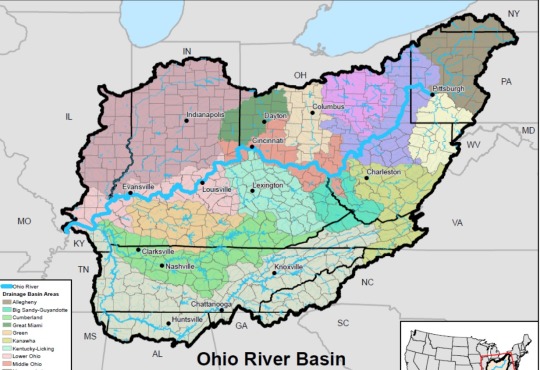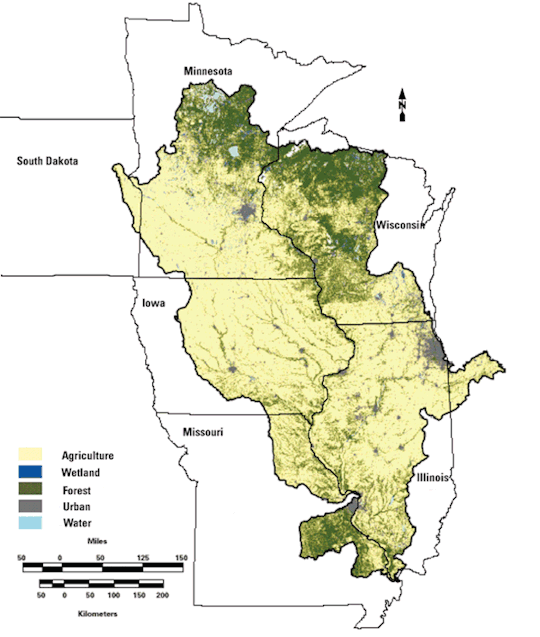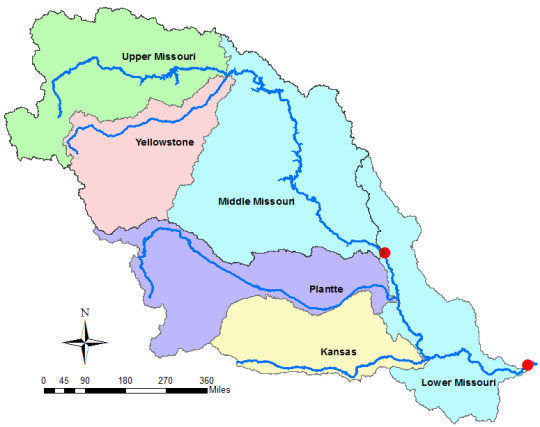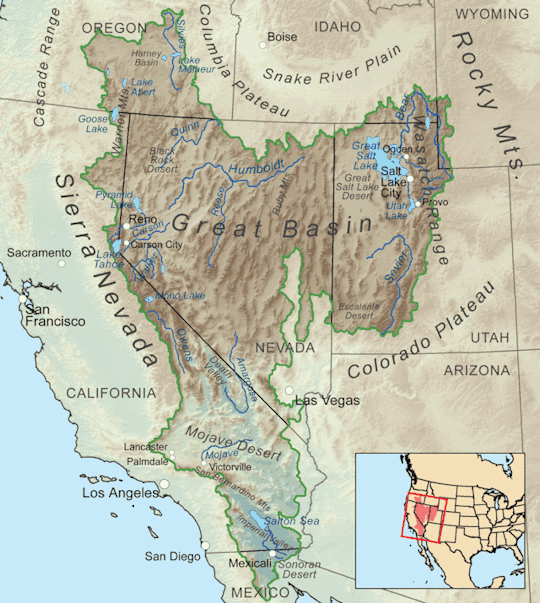#upper mississippi river
Text


Rattlesnake roundup events in the United States.
The “World’s Largest Rattlesnake Roundup” occurs in Sweetwater, Texas, held annually in the month of March since at least 1958. Texas government agencies estimate that, each year, up to 24,000 pounds or more of rattlesnake will be “harvested.”
#sweetwater roundup is this week#now timber rattlesnake is widely locally extinct in large parts of new york pennsylvania ohio and upper mississippi river corridor
33 notes
·
View notes
Text
Ever wonder what the headwaters of the longest river in North America look like? Wait no longer! Check out our newest video NOW:
youtube
#calico adventures#youtube#travel#tina tuna#nature#hiking#cats#minnesota#itasca state park#mississippi river#upper mississippi#mississippi headwaters
2 notes
·
View notes
Link
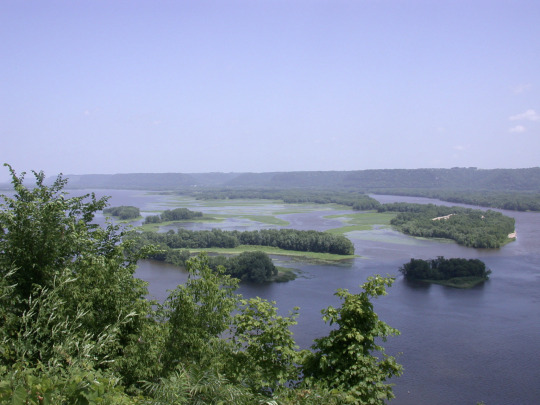
Upper Mississippi River National Wildlife and Fish Refuge.
Excerpt from this story from Madison.com:
A federal appeals panel heard arguments Wednesday in a case involving a controversial power line through southwest Wisconsin that could influence future permitting decisions on lines considered critical for a clean energy transition.
Conservation groups oppose the line, known as Cardinal-Hickory Creek, which would run 102 miles between Dubuque, Iowa, and Middleton. They argue it is unneeded and too expensive, would mar the Driftless landscape and cannot legally cross the Upper Mississippi River National Wildlife and Fish Refuge.
Utilities building the project at a cost of more than $500 million say it will improve reliability and deliver clean energy to places where it’s needed, while industry groups and academics argue the electric grid needs far more such long-distance lines to wean itself off fossil fuels.
The utilities are seeking to overturn U.S. District Court Judge William Conley’s ruling that the environmental review for the line was inadequate and that the project is incompatible with the wildlife refuge.
Conley barred the utilities from building within the 260,000-acre refuge, effectively blocking the planned river crossing, and ruled that a proposed land exchange cannot be used “to evade Congress’ mandate” for the refuge, which covers 261 river miles between Rock Island, Illinois, and Wabasha, Minnesota.
While they have not presented any alternative routes, the utilities have continued construction on either side of the river, spending at least $337.5 million, according to the most recent quarterly report to state regulators.
Opponents have asked the court to overturn Conley’s ruling that utilities can build outside of the refuge, which he called an “orchestrated train wreck.”
The appeals panel, composed of two Republican appointees and one Democratic appointee, appeared skeptical of the argument that the Fish and Wildlife Service could sidestep statutory requirements with a land swap.
#Upper Mississippi River National Wildlife and Fish Refuge#electricity transmission grid#Wisconsin#driftless area
4 notes
·
View notes
Text


Granted, this looks like a lovely 1877 second empire townhouse with a Mansard roof. It's in Minneapolis, MN, has 1bd, 1.5ba, and is listed for $1.2M + $1,029mo HOA (which really surprised me).

This is no ordinary townhouse. Walk through the cathedral-like doors and to the right is a small bar and wine rack.


And, to the left is this magnificent dining room under a dreamy carved wood pavilion with a painted ceiling.

But, that's not all. Check out the natural looking stone wall. And, the description says that it could possibly be an old tunnel that was sealed. (I would have to take a sledgehammer to it, then.)

Have you ever seen a fancier powder room? Fabric is on the wall in an assortment of carved frames with a mirror to match. The sink base is an intricately carved wood piece with a marble top. The faucet looks like a gold swan drinking from a large crystal bowl. Wow, I know I would chip that sink.


The casual living/family room features a brick wall with an arch and shelving. The rest of the room has lovely tall wainscoting and beamed wood ceilings. It also has stained glass upper windows.


The everyday dining room is right outside the kitchen.

Have you ever seen a kitchen like this? The wood countertops have flowers painted on them. Just noticed that's an Aga stove. (That size costs about $23K.)

The backsplashes over the stove and sink are detailed mosaics.

Even the little nook by the coffee bar has a mosaic backsplash.


The home is on 3 levels, so it's difficult to determine what floor this room is on. As you can see it's very elegant, very pink, with lovely white wainscoting, a magnificent fireplace and gold accents.

It looks comfortable and sunny, though. Love the chandelier, corbels and decals on the walls. (I'm not into tapestries, however.)


The owner commissioned a muralist to paint the stairwells. Note the fancy doors.


There's only 1 bd. and it has murals of the mountains of Japan, plus woven walls to make it look like a Minka, a traditional Japanese home.

Check out the entrance to the en-suite guarded by Fu Dogs.

The black granite tub has a big dragon head faucet. Wow, this is insane. Look at the floor and the wood walls.

Even the pattern in the shower looks like mountains.

Behind the doors there's a washer and dryer.

The sink vanity looks like an antique Japanese bureau and look at the private room for the black toilet.

You get 1 garage and 2 open spaces.

That's the Mississippi River across the street. It looks like there's a rooftop deck with sun rooms, too.
https://www.zillow.com/homedetails/8-Grove-St-8B-Minneapolis-MN-55401/1913645_zpid/
153 notes
·
View notes
Text
Fish of the Day
Today's fish of the day is the muskellunge!

The muskellunge, also called a musky, lunge, ski, and scientific name Esox masquinongy, is known for being the largest species of pike. Muskellunge can be found around the rivers of Michigan, specifically the Great Lakes region, Canadian waters, St Lawrence River, and around the Mississippi and Ohio river valleys. Outside of their natural range, they can also be found around the Tennessee river, South Carolina rivers, and as far South as Upper Georgia, where they are kept stocked intentionally for recreational fishing. They live around clean and clear waters with little silt, preferring to surround themselves with aquatic vegetation and weeds. This is because they tend to lurk near weedy shores and rocky outcroppings, although they can be found in deeper waters during the summer.

The diet of the muskie is made up primarily of other fish, although they will also eat: frogs, water birds, rats, and other animals that can be found in and around their environments. On rare occasions, muskellunge have been reported attacking dogs and children They attack other animals in an ambush, where the muskie will swiftly bite and swallow, not allowing any time for prey to fight back or escape. They can get as large as 50 inches in length, but there are claims of fish getting as large as 6ft. They have few predators, only large birds, such as bald eagles, other larger muskellunge or pike, and human fishing. With human fish thought to be the cause of their declining numbers.

Similar to other pikes, the muskellunge form small schools, and will claim territories that they fiercely defend, only becoming more aggressive during the breeding season. They spawn in the spring, like other pike, finding clean rocks or sandy bottomed rivers to lay their eggs. Spawning is only around a week to two weeks in length, and eggs are abandoned almost immediately. Once born, juveniles are only a few cm in length, but can get as large as 12 inches by their first year of life, and can get as old as 12-18 years.

That's the muskie fish, have a good day, everyone!
#fish#fish of the day#fishblr#fishposting#aquatic biology#marine biology#freshwater#freshwater fish#animal facts#animal#animals#fishes#informative#education#aquatic#aquatic life#nature#river#ocean#muskellunge
95 notes
·
View notes
Text

🔥🔥The Crow are also called the Apsáalooke, Absaroka, and Apsaroke. Their name was given them by the Hidatsa, and meant “people [or children] of the large-beaked bird.” Historically, they lived in the Yellowstone River Valley. A Siouan tribe, they once were part of the Hidatsa, living around the headwaters of the upper Mississippi River in northern Minnesota and Wisconsin. Later, the Crow moved to the Devil’s Lake region of North Dakota, before splitting with the Hidatsa and moving westward.
Settling in Montana, the tribe split once again into two divisions, called the Mountain Crow and the River Crow. They were first encountered by two Frenchmen in 1743 near the present-day town of Hardin, Montana. When the Lewis and Clark expedition came upon them in 1804, they estimated some 350 lodges with about 3,500 members ...
100 notes
·
View notes
Text

Cryptid of the Day: Washington’s Eagle
Description: Featured in Birds of America by John James Audubon in 1827, Washington’s Eagle was described as 4ft 7in, with a wingspan of 10ft 2in, seen around the upper Mississippi River. Due to a lack of sightings, the bird is no longer accepted as a valid species.
100 notes
·
View notes
Text

Tundra swans (Cygnus columbianus) take flight from the upper Mississippi River, Brownsville, Minnesota
by Larry Reis
#tundra swan#swans#waterfowl#birds#cygnus columbianus#cygnus#anatidae#anseriformes#aves#chordata#wildlife: minnesota#wildlife: usa#wildlife: north america
98 notes
·
View notes
Text

When you’re very small, running barefoot through damp grass on a summer evening, honeysuckle’s scent beckons like fireflies. It’s an alluring smell that, on the scale of things that will someday make you weep with longing, is somewhere between a magnolia blossom and your mother’s best perfume.
First, you pull off a creamy white or pale yellow flower. Then you hold it with the green base up. You carefully tug off the little green cap and draw out the single thread of the stamen. If you’re lucky and the fairies are with you, you’ll be rewarded with a drop of nectar, a small sip of sweetness, hanging on the end of the thread.
It’s a joy best savored by the young and patient, those with mouths so small and taste buds so fresh that the little drop seems as big and sweet as a Nik-L-Nip, those wax bottles of colored sugar syrup.
It’s like God loved Southern children so much, he draped the woods with a candy counter, free for the taking, proof that life will always be delicious and full of promise.
And then, inevitably, we grow up. As we get larger, tiny pleasures like honeysuckle blossoms don’t seem like such a big deal anymore. We get lives and yard work and mortgages, and we discover that not everything lovely is carefree.
• • •
The honeysuckle that festoons our woods is Japanese honeysuckle, and it’s an outsider here, an invader that pushed its way in, like kudzu and wisteria, those other vines that came from the outside and stayed to color the Southern landscape. Honeysuckle is not supposed to be here. It’s just another visitor that dropped by and liked it here too much to leave.
This rampant vine, first brought from its native Japan to U.S. shores on Long Island, New York in 1806, absolutely loves the Eastern climate. Propagating by berries spread by birds as well as running rhizomes, it proceeded to conquer just about all of the woodlands, roadsides, wetlands, and disturbed areas east of the Mississippi River. It invaded Texas, Arkansas, Louisiana, and Missouri too.
Like most vines, Japanese honeysuckle is programmed to grow and spread and never stop. If it has nothing to climb, it creeps along the ground until it does. When it does, it twines around it until it reaches the top and then starts looking for something else to climb. It will readily reach the top of a 100-foot-tall tree. If it twines around a young tree, it can literally strangle it to death. As it travels from tree to tree in the woods, it forms impenetrable thickets.
There are some uses and benefits to honeysuckle though. Mainly regarded in traditional Chinese medicine, the Honeysuckle has long been used as a natural home remedy to treat inflammation, stomach upset, upper respiratory infections, fever and more.
•Learn more about the benefits of honeysuckle at: https://www.greenshieldorganic.com/honeysuckle-benefits-and-uses/
(by Kathleen Purvis)
#appalachian#appalachian mountains#north carolina#appalachian culture#western north carolina#appalachia#the south#nc mountains#mcdowell county#mcdowellcounty
53 notes
·
View notes
Text
Milestone Monday










On June 17, 1673, French explorers Jacques Marquette (1637-1675) and Louis Jolliet (1645-1700) reach the Mississippi River through Prairie du Chien Wisconsin and continued downstream for thirty days mapping the river's course and interacting with Indigenous communities. Marquette and Jolliet’s legacy would forever be marked as the first Europeans to map the Upper Mississippi and record its local flora and fauna.
Commemorating the day, we’re sharing Minn of the Mississippi written and illustrated by Holling Clancy Holling and published by Houghton Mifflin Company in 1951. Holland’s story follows the journey of a three-legged snapping turtle from its hatching at the Mississippi headwaters to the Gulf of Mexico. Along the way, Minn encounters a variety of animals, people, and manmade and natural environments. Holling utilizes Minn’s expedition to discuss the ecology, geology, and history of the river through elaborately illustrative marginal content.
Adding to Holling’s notable publications, Minn of the Mississippi received a Newberry Honor in 1952 and was generally met with positive reviews including accolades for Holling and his contribution to the “art of digression” method of writing and illustrating. This book is part of our extensive Historical Curriculum Collection that can be explored online here.
Read other Milestone Monday posts here
– Jenna, Special Collections Graduate Intern
#milestone monday#minn of mississippi#mississippi river#holling clancy holling#newberry honor#houghton mifflin company#jacques marquette#louis jolliet#historical curriculum collection#snapping turtle#children's books#Newberry Honor Book
28 notes
·
View notes
Text
youtube
We recently took a day trip along both sides of the upper Mississippi Rover, and we filmed our favorite parts. Check out our latest Calico Adventure now!
#calico adventures#youtube#travel#tina tuna#nature#minnesota#wisconsin#mississippi river#upper mississippi
3 notes
·
View notes
Text
Haunted States of America: Michigan

Haunts of the Upper Great Lakes (1997) by Dixie Franklin
A bit of superstition haunts most of us -- a remnant perhaps of the memories of chillingly scary ghost stories told to us in our childhood. Northern Wisconsin and Michigan's Upper Peninsula have more than their share of ghosts and haunted spaces: from Lotta, the mysterious 'shady lady of the night' in Hurley, Wisconsin; to the ghost of Mary Green, who apparently thinks she is still the captain of the Delta Queen, an elegant paddlewheel boat that sails the Mississippi River today; to the mystery light that appears along a lonely road near Paulding, Michigan; to the various shades and ghostly occupants of homes and inns on Mackinac Island and across the Upper Peninsula and northern Wisconsin.
There are haunted lighthouses, haunted mansions and inns, and haunted woods -- all waiting for you in Haunts of the Upper Great Lakes!
Check out these other books about haunts in Michigan!
Haunted Houses of Michigan (1998) by Karen Hoisington Donaldson
Haunted Michigan: Recent Encounters with Active Spirits (2000) by Gerald S. Hunter
Ghost Stories of Michigan (2002) by Dan Asfar
The Browne Popular Culture Library (BPCL), founded in 1969, is the most comprehensive archive of its kind in the United States. Our focus and mission is to acquire and preserve research materials on American Popular Culture (post 1876) for curricular and research use. Visit our website at https://www.bgsu.edu/library/pcl.html.
#bgsu#libraries on tumblr#haunted states of america#michigan#upper peninsula#great lakes#ghosts#books
65 notes
·
View notes
Text

To the right is a dorsal spine bone from a "mudcat" or "flathead" catfish (Pylodictis olivaris) found during excavations at the mid-19th century Second Fort Crawford in Prairie du Chien. To the left are modern dorsal spines from mudcats weighing 8.5, 15.5, and 28.0 pounds (left to right). The Fort Crawford bone was probably from a fish 4.5 to 5.0 feet long and weighing perhaps 70 pounds or more. Mudcats this large or larger are still taken occasionally in the upper Mississippi River.
13 notes
·
View notes
Photo


I simply cannot resist a house with a turret. This 1930 beauty in St. Cloud, Minnesota blends French countryside seamlessly with the finest standards and attention to detail. 3bds. 4ba. $699,900.

Original custom made doors.

Look at the lovely arched hallway, rounded walls, tiled floors and wrought iron railings.



The sitting room has a lovely French fireplace. One door opens to the dining room and one to the beautiful sunroom.


Isn’t this a wonderful room? And, look at the size of the radiator- it’s a year round space.


The sunroom also has a door to the dining room. Look at the built-in glassware display closet.




This is my kinda kitchen- it’s not matchy-matchy, has antique furniture taking the place of cabinetry, and original tile backsplashes. If new buyers come in and modernize this kitchen I will bitch slap them.


Look at the doorways on the upper floors.


The main bd. is spacious and has this wonderful original en-suite. Look at the fabulous tile.


This bd. has room for a desk and it also opens to the upper terrace.

This bath was modernized, but at least they kept the pedestal sink and original mirrored medicine cabinet.

There’s definitely potential in the attic.

Home also offers a finished basement with a lovely brick fireplace.

Isn’t this a cute little area?

Look at the antique sink in the laundry room. I even love the radiators hanging on the ceiling.

Bonus! The house has gryphons on the upper terrace.

The property is on the banks of the Mississippi River.

Cute little shed on the property, too. It’s a great house.
https://www.zillow.com/homedetails/37-Highbanks-Pl-S-Saint-Cloud-MN-56301/74886588_zpid/
338 notes
·
View notes
Text
Big week for news about “mountain lions wandering back into historic habitat where they were once persecuted to extinction” in February 2023.
---
Central Texas:


Headline and screenshots from: Priscilla Aguirre. “Potential mountain lion sighting in San Antonio area raises awareness.” My San Antonio. 14 February 2023.
Excerpt from this article: Officials at the San Marcos Parks and Recreation Department are asking others and the surrounding areas to be cautious about potential mountain lions in Central Texas. Officials said the message comes after the department received a call about a potential sighting of a mountain lion at Upper Purgatory Creek Natural Area in San Marcos on Sunday, February 12. [...] In Central Texas, it’s extremely rare to see a mountain lion in person, according to a report from the San Antonio Express-News. [...] Only one mountain lion has been confirmed in Bexar County in the past decade, on November 24, 2013, according to TPWD. [End of excerpt.]
---
Great Plains and Nebraska:

Headline and screenshot from: Damon Bennett. “Nebraska mountain lion now looking for a name after 700-mile journey.” Lincoln Journal-Star. 16 February 2023.
Excerpt from this article: A Nebraska mountain lion that found itself in a sanctuary in Indiana after a 700-mile journey through four states is now looking for one last souvenir: a name. Back in the fall, the big cat made its way from the scenic Niobrara River valley all the way to suburban Springfield, Illinois, according to the GPS tracker that Nebraska Game and Parks had tagged it with a year prior. "A lot of people were watching him," said [the director of an “exotic feline rescue center”] in Center Point, Indiana, where the mountain lion has been since October. When the lion overstayed its welcome near Springfield, it was sedated by federal wildlife officials, who offered to return it to Nebraska. Nebraska declined.’ [...] "I'm incredibly impressed with this animal; he crossed both the Missouri and Mississippi rivers [...]." [End of excerpt.]
---
Ozarks and Missouri:

Headline and screenshot from: Julia Wilson. “Mountain lions in Missouri? We’re seeing more than usual this winter.” Columbia Missourian. 16 February 2023.
Excerpt from this article: Footage from a trail camera taken Jan. 3 confirmed that a roaming mountain lion made a rare appearance in northern Boone County. Since then, the Missouri Department of Conservation documented three additional sightings around the state last month — one in Callaway County, another in Montgomery County and a third that was hit by a vehicle south of St. Louis. Reports of mountain lions, also known as cougars, pumas and panthers, have increased over the past decade in the state. Between 2013 and 2022, a total of 65 were counted around Missouri. Compare that to the years between 1994 and 2006, when only 12 were spotted. [...] The animals may come from an established colony in the Black Hills, cross Nebraska and wander into Missouri, according to the Kansas Department of Wildlife and Parks. Missouri’s extensive forest coverage, which includes 35% of state acreage, then becomes an ideal destination for the animals. Mountain lions have roamed Missouri since pre-settlement times. Their range crosses the western hemisphere from Canada to southern Chile. [...] Although they are seen across the state, over half of all sightings have been documented within 40 miles of Mark Twain National Forest in southeast Missouri. [...] Trophy hunting by early colonists wiped out most of the population east of the Mississippi River. [...] Except for the recent encounter in Franklin County where a lion was hit by a vehicle, the last documented human contact occurred in December 2021 during another vehicle collision. [End of excerpt.]
---
For reference:

205 notes
·
View notes
